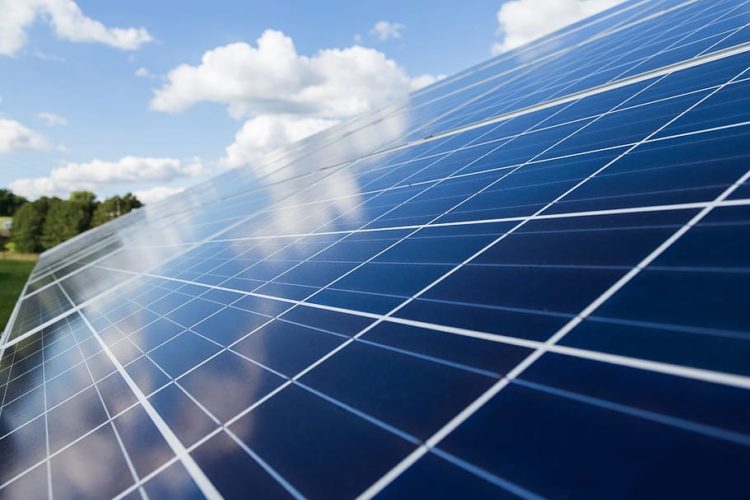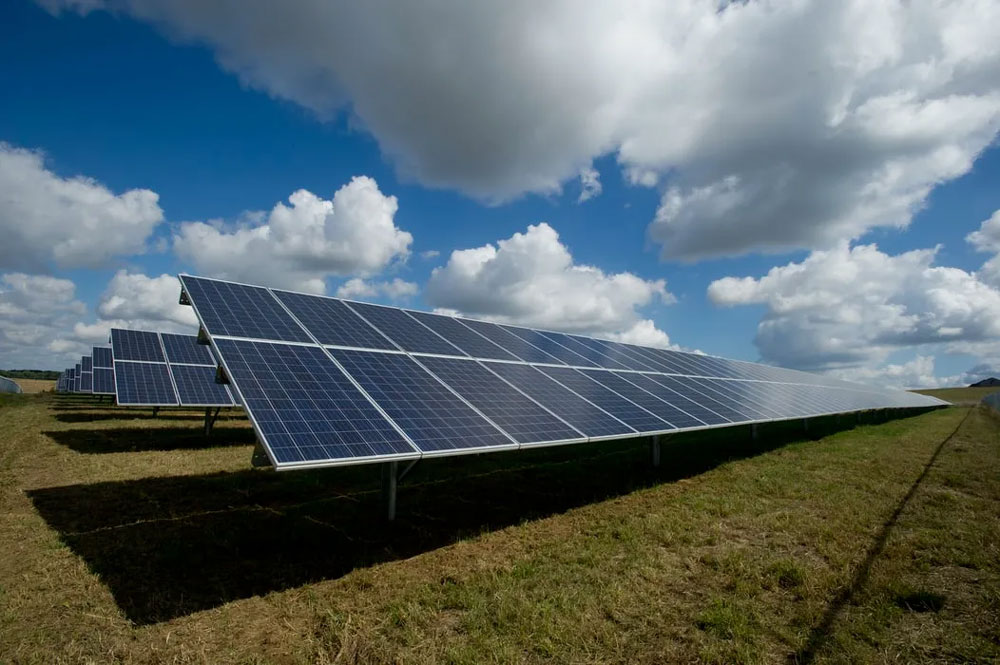How do photovoltaic panels perform in shade: 5 solutions
In shade, PV panels lose 30-50% output; mitigate via bypass diodes (18-24 cells protected), 30° tilt to cut shading time, half-cell tech (loss <10% vs. 20% full), smart inverters (MPPT recovers 5-8%), and debris cleaning (avoids 5% extra loss).
Shade Kills Panel Power
Partial shading can slash power output by 50% or more, not just on one panel, but across entire strings. This happens because most home solar systems are wired in series, like old Christmas lights. If one panel is underperforming, it drags down the entire chain. For example, a single shadow from a chimney covering just 20% of one panel can reduce a 10-panel string’s output from 4,000W to under 1,800W.
Modern panels typically contain 60 or 72 cells wired in series. When shade covers just a few cells, it creates a high-resistance pathway that can become a hotspot, heating up to 80°C (176°F) and potentially causing permanent micro-cracks over time. This accelerates panel degradation, potentially cutting its 25-year lifespan significantly.
Shading Type | Typical Power Loss in a String |
Light dust/leaf cover (30% of one panel) | 25-40% |
Vent pipe shadow (on 5-10 cells) | 50-70% |
Complete cover of one panel (in a 10-panel string) | Up to 90%* |
“A shadow isn’t just blocking light; it’s actively resisting the flow of electricity generated by the rest of the system. It’s like pinching a garden hose—the entire stream weakens.”
— Solar Installer, with 12 years of field experience
For instance, a tree 20 feet south of the array may only cause shading for 45 minutes per day in summer, but that can balloon to over 3 hours in the winter when the sun is lower in the sky. This analysis directly informs the panel layout, often pushing installers to use microinverters or DC optimizers—add-on devices that add 1,000−2,000 to a typical system cost but isolate each panel’s performance.

Move Panels Out of Shade
While it might seem obvious, many homeowners don't realize that a shift of just a few feet can mean gaining over 4 hours of additional direct sunlight per day, especially during the shorter days of winter. This isn't about minor adjustments; it's a strategic repositioning that can boost a system's annual energy production by 20% or more, turning a marginal investment into a high-performing asset.
Relocating panels starts with a detailed 12-month sun path simulation. Professional installers use tools like the Solmetric SunEye to capture a 360-degree fish-eye lens photo of the skyline from the exact proposed array location. This image is then overlaid with the sun’s trajectory for every month, calculating the Percentage of Solar Access—a critical metric. A site needs at least 95% solar access to be considered optimal; anything below 80% will significantly hamper returns. For example, a roof section with 85% access might produce 1,100 kWh per kW annually, while a 95% access area can yield over 1,400 kWh/kW. This 300 kWh difference, for a 6 kW system, translates to 1,800 kWh more energy per year, roughly $360 in savings at average electricity rates.
While they typically add 3,000−5,000 to the installation cost due to trenching and additional racking, they can be precisely angled (azimuth and tilt) for maximum exposure, often outperforming a compromised roof array. The process of moving existing panels is a cost-benefit analysis. Re-roofing a single panel might cost 150−200 in labor, while a full re-installation on a new section of roof could run 1,000−1,500. However, if that move increases daily production from 18 kWh to 24 kWh, the $1,500 investment pays for itself in under 18 months with consistent energy savings.
Use Bypass Diodes Fix
Without them, a single shaded cell could force an entire 60-cell panel to drop from 350W output to near 0W, creating dangerous hotspots exceeding 85°C. Most modern panels come equipped with 3 bypass diodes, each protecting a string of 20-24 cells. This design limits the maximum power loss from partial shading to approximately 33% per panel, instead of a total collapse. For a homeowner with persistent chimney shadowing, activating these diodes can mean the difference between producing 2.1 kWh daily versus just 0.7 kWh.
Bypass diodes operate by conducting electricity only when a specific voltage threshold is reached—typically a ~0.7V forward bias. When a cell group underperforms due to shade, its voltage drops. If the current from adjacent healthy groups forces a reverse voltage exceeding -15V, the diode activates within 100 nanoseconds, creating a low-resistance path around the compromised section. This isn't a gradual process; it's an instantaneous electrical rerouting that prevents power from being forced backward through weak cells. However, diodes don't recover lost energy—they merely minimize the damage. A panel with one fully shaded section might see its output stabilized at 240W instead of 350W, but that 110W deficit is permanently lost as heat dissipated through the diode.
Standard Schottky diodes have a forward voltage drop of 0.3-0.5V, which translates to a 1.5-2.5% power loss even when active. High-end panels may use advanced diodes with just 0.25V drop, cutting the loss to under 1%. For older panels without integrated diodes, retrofitting is possible but requires technical skill: adding a diode kit costs 40−60 per panel plus $120 labor, but can upgrade a 10-year-old system's shade tolerance by 70%. The key is ensuring diodes are rated for the panel's short-circuit current (Isc), which can spike to 9.5A during cloud-edge effects, requiring diodes with at least 10A rating.
Shading Scenario (on 60-cell panel) | Output Without Diodes | Output With 3 Diodes | Heat Generated at Shaded Area |
20% of one cell group shaded | 90W | 290W | 45°C |
One cell fully covered | 15W | 330W | 52°C |
Entire cell group (20 cells) shaded | 0W | 235W | 68°C |
Dust covering 50% of surface | 110W | 275W | 61°C |
They can't prevent the 25-40% power reduction from shading—they only stop it from cascading. For complete shade immunity, pairing diodes with DC optimizers (adding 50−80 per panel) allows each diode-protected section to operate independently, recovering up to 95% of the possible power even with complex shading patterns.
Clean & Fix Shadows
A layer of dust as thin as 1/16 of an inch can block up to 8% of sunlight, and in arid climates or near construction sites, monthly cleaning isn't a luxury; it's essential for maintaining ROI. Meanwhile, "hard shading" from overgrown vegetation or a newly installed antenna can be even more destructive, slicing production by 50% or more in specific time windows. The good news is that many of these issues require simple, low-cost interventions that can restore 95-98% of your system's original capacity in under 90 minutes of work.
For systems in areas with under 10 inches of annual rainfall, a quarterly cleaning schedule is the bare minimum. Using a deionized water system with a telescopic pole and soft brush typically costs 150−300 per service for a 6 kW array, but boosts average daily output by 3.2 kWh. This translates to roughly 0.64 per day in saved energy costs, paying for the annual cleaning budget in under 8 months. For the DIY approach, a kit with a 10-liter reservoir, water filter, and extension brush costs 120 one-time, and each cleaning takes about 45 minutes while adding 1.2 kWh to your daily production. Avoid high-pressure washers (which can damage sealant and warranties) and early morning cleaning (which risks thermal shock on warm glass). The key metric is the soiling loss rate; if your monitoring shows a 5%+ performance dip between rain events, it's time to clean.
This involves a semi-annual site audit. Walk around your property at 9 AM, 12 PM, and 3 PM on a clear day to identify new obstructions. The most common offenders are:
· Tree Branches: Vegetation grows 0.5 to 1.5 inches monthly. Branches within 10 feet of the array should be trimmed back by at least 5 feet to prevent morning/afternoon shading.
· Debris Accumulation: Leaves, pine needles, and pollen cakes create uneven shading. A monthly visual inspection and gentle sweeping can prevent a 3% cumulative loss from build-up.
· Man-Made Objects: New satellite dishes, vents, or even accumulated lawn equipment can cast shadows. Relocating a small object causing a 2-hour daily shadow can recover 0.9 kWh per day.
For permanent structures, consider selectively removing and relocating just 1-2 panels at a cost of 250−400 per panel, which is often cheaper than losing 30% of a whole string's output. The goal is to maintain at least 95% solar access across all panels for 8+ hours daily from March to September.

Pick Shade-Tolerant Panels
Not all solar panels are created equal; standard 60-cell modules can lose over 50% of their power output from partial shading, while advanced shade-tolerant designs can limit these losses to just 15-25%. This isn't a minor improvement—it's the difference between a system that delivers a 7-year payback and one that struggles to break even in 12 years.
Half-Cut Cell Design: Instead of the standard 120 or 144 full-size cells, these panels use 120 or 144 half-cells. This effectively doubles the number of cells and splits the panel into two independent sections wired in parallel. If shade covers the bottom half, the top half continues operating at full capacity. This design alone can reduce shading losses by 30-50% compared to traditional panels. For example, a standard panel might drop to 180W output when a vent pipe shades a row of cells, while a half-cut panel might only fall to 260W, preserving 45% more power at the exact same time.
Multi-Busbar (MBB) and Shingled Cells: Modern panels now feature 9 to 16 busbars (the thin silver lines on cells), up from the traditional 4 or 5. This denser grid creates more pathways for current to flow around a shaded cell. Shingled cell technology takes this further by overlapping cells like shingles on a roof, creating a continuous, redundant circuit. This architecture can improve overall efficiency by 2-3% and significantly enhance low-light performance. A shingled module might produce 50W on a cloudy afternoon where a standard panel produces only 42W, a 19% increase in energy capture.
The real-world cost premium for this technology is typically 0.08 to 0.12 per watt, adding 500 to 750 to the gross cost of a 6 kW system. However, this upfront investment can boost annual energy production by 12-18%, shaving 6-8 months off the payback period. For a homeowner facing 3 hours of daily tree shading, this could mean generating 4.1 kWh per day instead of 3.5 kWh, capturing an extra 219 kWh annually worth about $44. Over the panel's 25-year lifespan, that extra output totals 5,475 kWh, effectively paying for the technology upgrade multiple times over. When specifying these panels, look for a lower temperature coefficient (around -0.30%/°C vs. the standard -0.40%/°C), which also helps performance on hot, partially shaded days. Brands like REC Alpha Pure or SunPower Maxeon consistently top independent testing for shade tolerance, making them a worthy investment for challenging installations.